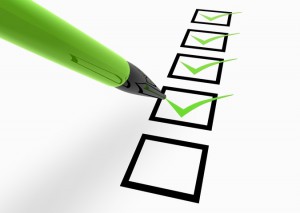On a previous post we stressed the importance of using authentic tasks in the World Languages classroom and we gave some examples of authentic speaking tasks that could be assigned via Extempore. If we decide to use authentic tasks for instruction, then we should also use authentic assessments and evaluate our students with instruments that make them use the language in a way that resembles a real-life communicative experience.
Although designing authentic speaking tasks for the classroom becomes relatively easy with practice, using them for assessment purposes presents some challenges. If done as 1:1 interviews, we need to find time to schedule those individual meetings with each of our students. If done simultaneously in the classroom, we need to have recording equipment for every pair or small group of students performing the task. If students use the voice recorder on their phones, then we need to deal with the multiple mp3 files (or other formats for which you may not have the software) that students email to you when they are done. If we ask students to record themselves at their own time outside of the classroom, then we may have students writing their response.
As we have explained before, Extempore's features help you address these challenges and create authentic speaking tasks for assessment. We propose that you use classroom-based interactive tasks for both, formative assessment purposes, that is, to gauge how well students are learning the content and modify instruction accordingly, and for summative assessment, that is, to test their skills at the end of a unit or semester.

Using classroom-based interactive tasks as assessments. At the end of the term, when we ask students to sign up in pairs for an oral exam in which they role play a situation in front of the instructor, we are attempting to recreate an authentic interactive task that happens regularly in our classroom. However, the context is not exactly the same. During classroom-based practice, there are 12 or 15 pairs performing a task simultaneously. In the testing situation, each pair of students is performing alone under the attentive stare of the instructor, sometimes not even in the regular classroom, but in the teacher’s office. Also, if the instructor hasn't been able to reach each of the 12 or 15 pairs in the classroom during a particular speaking task, which is the case more often than not, by the time the students get to the testing situation they have received little feedback on their speaking skills.
In order to make our end-of-the-term oral assessment more useful and less stressful for students, we should give feedback on a regular basis and try to replicate the conditions in which students have practiced a given task in the classroom. With Extempore, we can ask students to record a few of their classroom-based practices and submit them for formative assessment purposes. As for summative assessment, we could choose a regular class day to ask students to record their interaction not for practice, but for an end-of-term or end-of-unit grade.
Whether tasks are used for practice or for assessment, it is important to have clear directions and a detailed rubric for students to know what the goals are and how they will be assessed.



